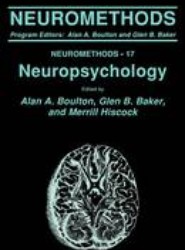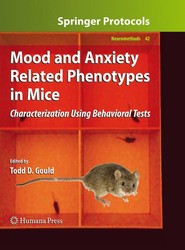(To see other currencies, click on price)
MORE ABOUT THIS BOOK
Main description:
In view of the numerous failures of clinical trials aimed at improving stroke therapy, the role and potential benefit of experimentally modeling focal cerebral ischemia in rodents has been debated. When methods of systematic review and metaanalyis are applied, however, it turns out that experimental models actually faithfully predicted the negative outcomes of clinical trials. In addition, thrombolysis and neuroprotection by hypothermia, first described in animal models, are key examples of treatment modalities that have made it successfully into clinical practice. In Rodent Models of Stroke, an international consortium of authors aims at critically addressing the issues on a very practical level, from choosing the model and outcome measures, designing the experiment, conducting and analyzing it, to reporting it in a scientific publication. The structure and content of the book reflect both the authors' longstanding expertise in experimental and clinical stroke research and their roles in training the scientific community in the tools of the trade. As a volume in the successful Neuromethods series, the chapters provide authoritative reviews of the most commonly used, well-honed approaches in the field today.
Stimulating and easy-to-use, Rodent Models of Stroke will help its readers understand the limitations and the opportunities of modeling stroke in rodents and enable them to conduct experiments which will not only improve our understanding of the pathophysiology of this devastating disorder but also serve as the basis for developing new highly effective treatments.
Contents:
1. From Bedside to Bench: How Clinical Reality Should Instruct Stroke Modeling
Pauline Patak and Dirk M. Hermann
2. How to Avoid Bumping into the Translational Roadblock
Malcolm Macleod
3. Modeling Focal Cerebral Ischemia in Rodents: Introduction and Overview
Vincent Prinz and Matthias Endres
4. Focal Cerebral Ischemia in the Mouse and Rat Using the Intraluminal Suture-Filament Model
Ludmila Belayev, Matthias Endres, and Vincent Prinz
5. Focal Ischemia Models: Middle Cerebral Artery Occlusion Induced by Electrocoagulation, Occluding Devices, and Endothelin-1
I. Mhairi Macrae
6. Rodent Models of Thromboembolic Stroke
Cyrille Orset, Benoit Haelewyn, Kilian Vivien, Denis Vivien, and Alan R. Young
7. Photochemical and Endothelin Models of Focal Brain Ischemia
Otto W. Witte
8. Housing in an Enriched Environment: A Tool to Study Functional Recovery after Experimental Stroke
Karsten Ruscher and Tadeusz Wieloch
9. Modeling Risk Factors and Confounding Effects in Stroke
Barry McColl, David Howells, Nancy Rothwell, and Adam Denes
10. Effect of Anesthesia in Stroke Models
Richard J. Traystman
11. Non-Invasive Brain Imaging in Small Animal Stroke Models: MRI and PET
Anna M. Planas
12. Noninvasive Optical Imaging in Small Animal Models of Stroke
Andreas Wunder and Jan Klohs
13. Behavioral Testing in Mouse Models of Stroke
Mustafa Balkaya and Matthias Endres
14. Behavioral Testing in Rodent Models of Stroke
Gerlinde A. Metz
15. Histology and Infarct Volume Determination
Clemens Sommer
16. Ethics of Modeling of Cerebral Ischemia in Small Animals
Ute Lindauer
17. Quality Control and Standard Operating Procedures
Ulrich Dirnagl
18. Statistics in Experimental Stroke Research: From Sample Size Calculation to Data Description and Significance Testing
Ulrich Dirnagl
19. Complexities, Confounders, and Challenges in Experimental Stroke Research: A Checklist for Researchers and Reviewers
Ulrich Dirnagl
PRODUCT DETAILS
Publisher: Springer (Humana Press Inc.)
Publication date: July, 2010
Pages: 297
Weight: 1630g
Availability: Available
Subcategories: Forensics, Neuroscience
From the same series
Francisco Ciruela
Alon Korngreen
Judee K. Burgoon
David Walker
Nina Karpova
Gabriela K. Popescu
Jerome Y. Yager
Heather A. Bimonte-Nelson
Tetsuichiro Saito
Adalberto Merighi
Giselbert Hauptmann
Joost Verhaagen
Pierre L. Roubertoux
Kewal K. Jain
Wolfgang Blenau
Mario Tiberi
Vangelis Sakkalis
Benjamin R. Arenkiel
Jennie B. Leach
Johannes Hirrlinger
Alvaro Pascual-Leone
Theodore H. Schwartz
Eugenio F. Fornasiero
Antoine Triller
Fritjof Helmchen
Alan A. Boulton
Alan A. Boulton
Peter Thorn
Riccardo Brambilla
Alan A. Boulton
Alan A. Boulton
Alan A. Boulton
Alan A. Boulton
Wolfgang Walz
Alan A. Boulton
Alan A. Boulton
Alan A. Boulton
Alan A. Boulton
Alan A. Boulton
Alan A. Boulton
Alan A. Boulton
Alan A. Boulton
Alan A. Boulton
Alan A. Boulton
Alan A. Boulton
Alan A. Boulton
Wolfgang Walz
Alan A. Boulton
Alan A. Boulton
Alan A. Boulton
Alan A. Boulton
Alan A. Boulton
Peter V. Nguyen
Stephane Marinesco
H. Aldskogius
Rolf Dermietzel
Paul M. Pilowsky
Giuseppe Di Giovanni
Ricardo Martinez Murillo
Nicole M. Avena
Klaus Ballanyi
Jean-Rene Martin
Bassem A. Hassan
Gerhard Grunder
Emilio Badoer
Allan V. Kalueff
Hideyuki Mukai
Todd D. Gould
Ole H. Petersen
Tommaso Fellin
Alexei Morozov
Yannis Karamanos
Alan A. Boulton
Stephen B. Dunnett
Stephen B. Dunnett
Todd D. Gould
Patricio O'Donnell
Ka Wan Li
Scott Q. Harper
Michael Aschner
James J. Chambers
Mary C. Olmstead
Illana Gozes
Peter Paul de Deyn
Robert P. Vertes
Andrea C. LeBlanc
Shlomo Seidman
Hugh C. Hemmings
Alan A. Boulton
Alan A. Boulton
Wolfgang Walz
Alan A. Boulton
Allan V. Kalueff
Allan V. Kalueff
Chao Ma
Jacob Raber
Iok-Hou Pang
Allan V. Kalueff
Kewal K. Jain
Prof. Alexei Verkhratsky
Todd D. Gould
Massimo Filippi
Scott C. Baraban
Illana Gozes
Wolfgang Walz

















































































































